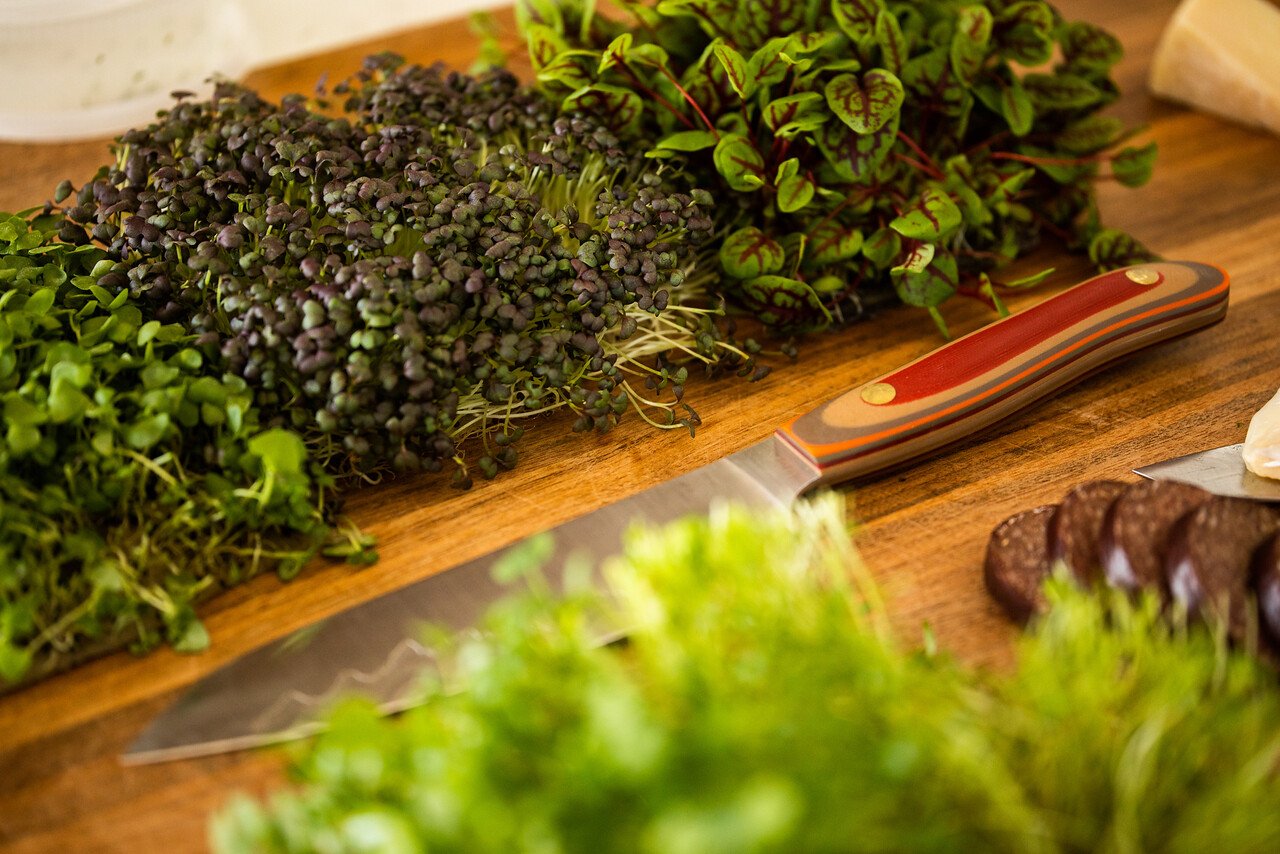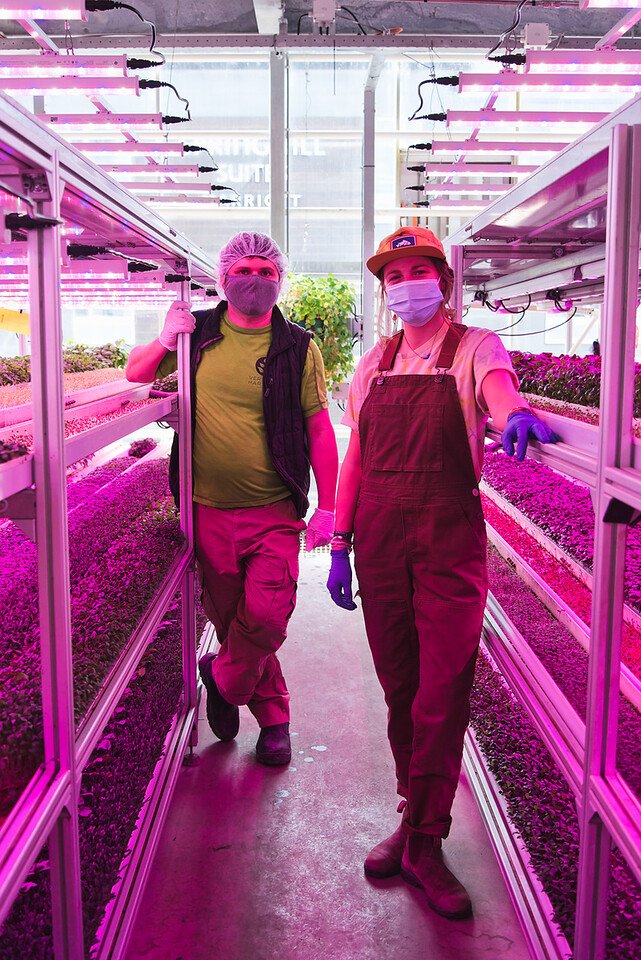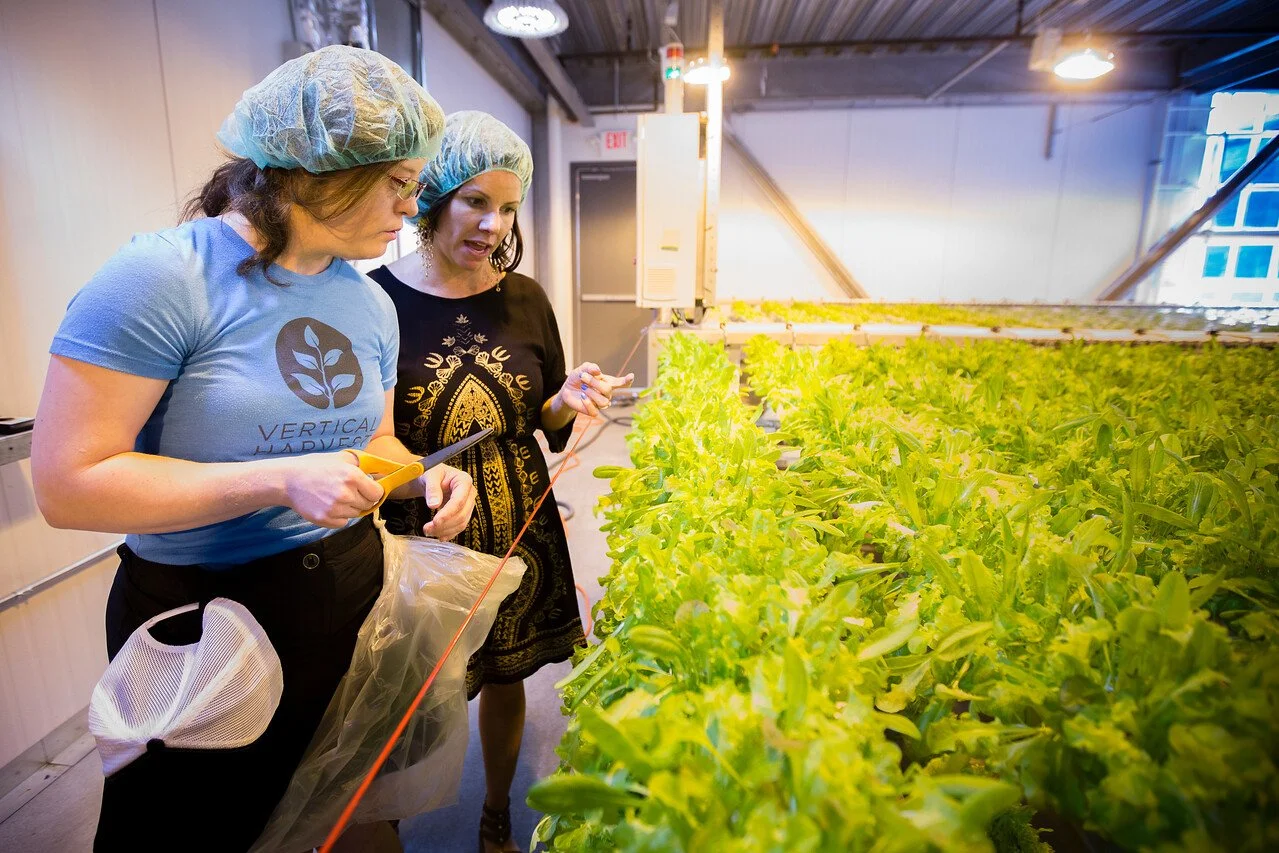Jan 18, 2022
5 Trends That Will Impact The Food System's Resilience To Climate Change In 2022
Editor's Note: This post was written by Nona Yehia, CEO & Co-Founder at Vertical Harvest. As an accomplished architect by training, Nona built Vertical Harvest from the ground up as North America’s first vertical hydroponic greenhouse. Alongside her Co-Founder Caroline Croft-Estay, Yehia pioneered the company’s Grow Well employment model, which grows both food and futures by investing in each team member’s individual career path, with a particular focus on inclusive and customized employment for people with physical and/or intellectual disabilities.
Weather in 2021 showed up in superlatives. Wettest. Driest. Hottest. Coldest. Deadliest. It was a watershed year—one that firmly planted us in the middle of what some are calling the “Oh, sh*#t!” era of climate awareness.
Our collective consciousness around the changing climate was no doubt elevated. Unfortunately, it wasn’t just due to the scientists and experts who’ve been ringing the alarm bells for decades. It was also because a series of climate disasters unfolded, personally, at our doorsteps. But calamity and catastrophizing never paint the full picture. There is vital, innovative, utterly urgent work being done by visionaries around the world, paving a hopeful path for our energy, agriculture, and social systems.
The start of the year is always a moment to look ahead and see where we think the current momentum is taking us. Working at the intersection of climate resilience, food accessibility, and economic inclusivity, I have a wonderful perch to view all kinds of interesting progress and perspectives. Here’s what I see trending that I’m most excited about.
2022 Will Be Infrastructure Week Year

Nona Yehia, CEO & Co-Founder at Vertical Harvest; Image sourced from Vertical Harvest
What a ride we’ve all been on these past few months, as we watched and hoped Washington could finally address our national infrastructure woes. In the recent federal infrastructure bill, there is money to upgrade and green our power grid, clean up superfund sites, invest in mass transit, get lead out of the water supply, and fix roads and bridges as well as prepare them for new climate realities. This is outstanding news. But there’s still more to do, and much of it needs to take place in the communities where these investments have historically been missing.
What’s needed is an infrastructure revolution, ignited locally and scaled sustainably. The decentralization and localization of food and energy production is a great example. Hopefully, the new infrastructure funds, especially those earmarked for greening the grid, can be deployed as part of smarter, more systemic solutions. For instance, ultra-urban farming and controlled environment agriculture (CEA) operations make great foundational customers for clean energy producers. Plant farms can work with the GENCOs (power generation companies) to align our heaviest energy consumption to fall outside peak demand hours and sign offtake agreements that are a stable source of revenue. CEA paired with a clean energy source is greener than traditional agriculture, and communities reap all the additional industry benefits of water conservation, arable land preservation, resiliency in the face of climate extremes, and an overall reduction in food waste.
If we can work with federal, state, and local governments to make this systemic approach to clean energy infrastructure investments a reality, the outcomes are not just greener energy but can also extend into food security, economic inclusivity, and overall social impact across many different SDG measures.
The Mighty Microgreen
Many people’s first encounter with microgreens comes as a sprig of micro kale atop an appetizer or a colorful garnish to a delicious entrée. But these nutrient-dense greens, while tiny in size, play a massive role in the climate and COVID-19 conversations.
Amid pandemic-induced supply chain disruptions, microgreens can offer “a simple, short-term solution, even partially, to address nutrition insecurity” at a household level and in situations of emergency, according to a 2021 Penn State research study. Food production must increase twofold by 2050 to meet demand from the global population. Microgreens can be grown quickly and just about anywhere, and require little fertilizer compared to traditional crops, and offer a real solution as this deadline looms. In fact, according to the 2021 Global CEA Census, 46% of respondents (CEA growers) are currently growing microgreens.
Get a synthesis of the key insights from the 2021 Global CEA Census Report in the webinar ‘Sustainability in Indoor Ag: Where Are We Headed Next?’ on February 2nd!
But don’t think of microgreens like military MREs—they’re not just for convenience and disaster aversion. They’re flavorful, antioxidant-dense, and delicious bases for any meal, and demand for these mighty greens is not slowing down, with a projected market CAGR of 7.5% from 2021 to 2026.
The Rise of the Climatarian

Image sourced from Vertical Harvest
“Meatless Monday” has been a well-known global initiative for some time. In fact, many people’s foray into the concept of the climatarian diet has come in the form of that simple directive: Eat less meat. As the menu at COP26 came carbon-counted and a growing number of food brands have committed to carbon footprint labelling, it’s become clear that climate-friendly diets are not a fad, but a lifestyle soon to become mainstream. And as environmental science enthusiast and foraging expert @blackforager recently pointed out, even a vegan diet doesn’t necessarily mean a more climate-friendly one. There are a host of different calculations that go into figuring out what’s best for the planet if that’s your priority.
The good news? There are many ways to participate in a climatarian diet that goes beyond teetotaling animal-based proteins: swapping beef or lamb for pork, poultry, sustainable fish, eggs, or plant-based proteins; committing to shopping with a keener eye for food waste; composting your uncooked vegetable and fruit waste; dining out in moderation; and opting for local and seasonal produce all helps cut down on CO2. Additionally, methods like carbon sequestration and perennializing crops can make traditional agriculture less carbon intensive. And new culinary explorations into kelp, like Atlantic Sea Farms and the Land Institute’s work on Kernza, are opening up entirely new opportunities to eat more sustainably.
Delivering Last-Mile Nutrition for Low-Access Communities
How we use food as a medium and means to increase social equity is becoming a greater consideration in communities around the world. At Vertical Harvest, we are constantly interrogating the difference between availability, accessibility, and affordability in a consumer’s decision-making process. And the truth is: Approaches that work in one place may not work the same in another, which is why we believe community engagement, and an open mind with many different purposeful partners, is key. From integration with SNAP benefits, to programs run through various school initiatives, fruit and vegetable prescriptions (FVRx) and mobile and/or app-based services that bring fresh and affordable produce the “last mile”—these can all be valuable tools in the toolbox.
2022 will be a watershed year for local food economies, food banks, institutional food services and state and federally funded nutrition programs to leverage tech innovations from the private sector to help align availability, accessibility, and affordability for nutrition insecure communities. And when these initiatives also help cut down on food waste and help “ugly” produce find its way into beautiful and delicious prepared foods, both climate and underserved communities win together.

Image sourced from Vertical Harvest
The Anti-Plastic Packaging Revolution
Plastic packaging will not disappear overnight. The truth is: We must reduce our reliance on single-use plastics while also acknowledging that some plastics provide a stopgap measure as we explore and scale more sustainable options—and there are many. New “bioactive” paper bags are beginning to appear in grocery stores. They keep produce fresh, kill bacteria, and can be reused multiple times before being recycled. Compostable and other biodegradable packaging is increasing in popularity, allowing consumers to buy more sustainably.
According to the 2021 Global Green Buying Report, 67% of consumers want more sustainable packaging options, however, the recycling rates for metal, glass, plastic and liquid cartons remained lower than consumers expected. This revolution is only beginning to ignite, and thus, education around non-plastic packaging will become just as important as its proliferation. And while the journey is on-going, we feel like 2022 is going to see brands making more meaningful choices in this direction as customers clamor for it.



